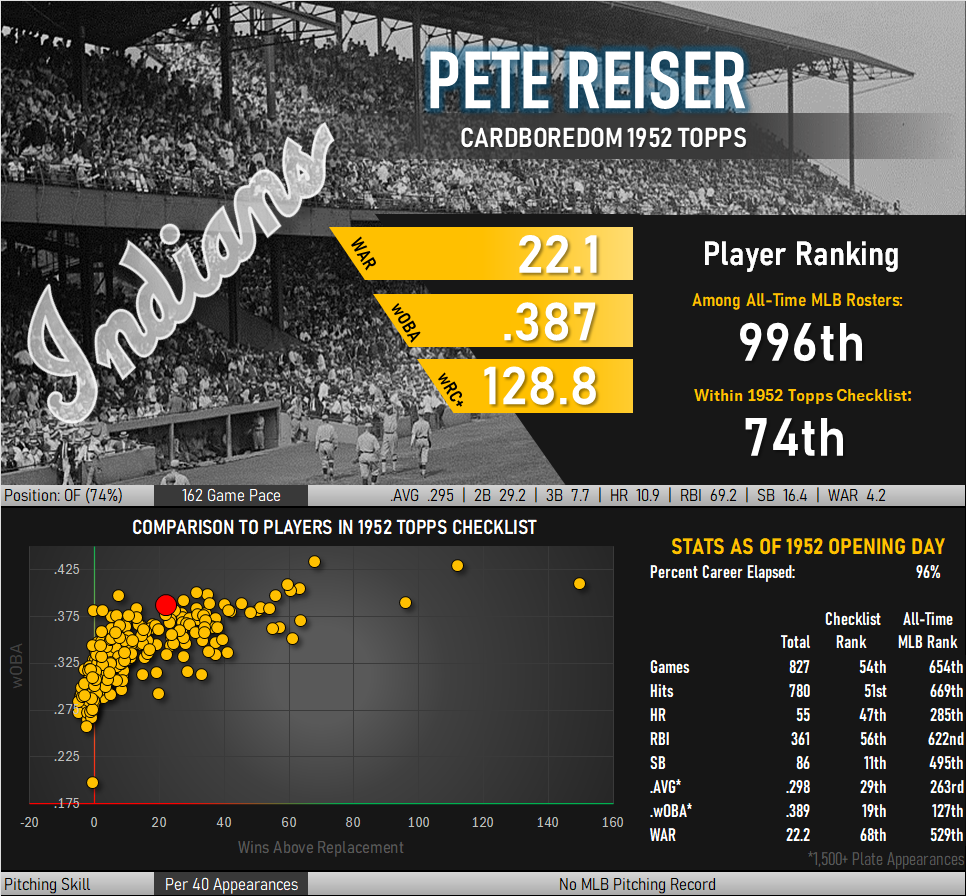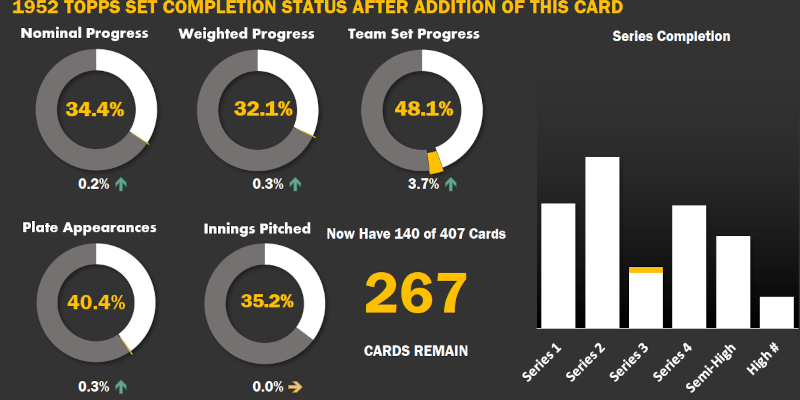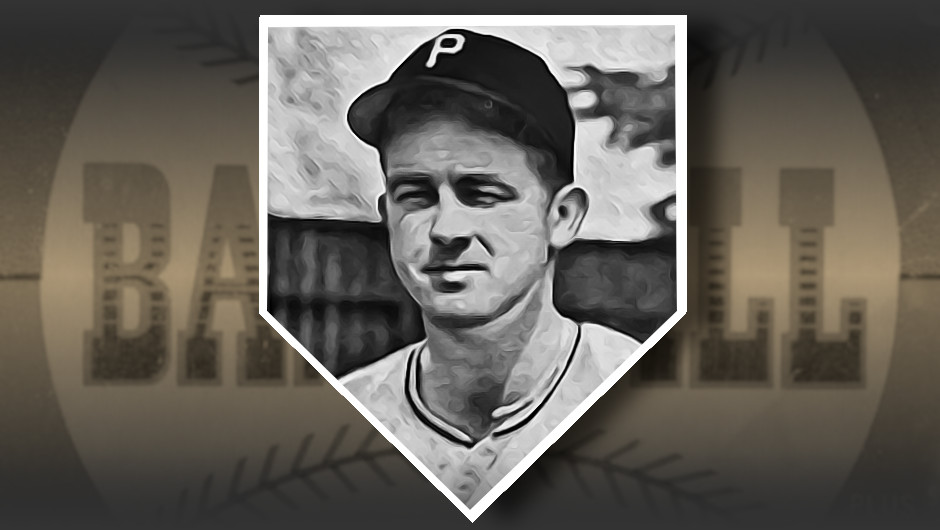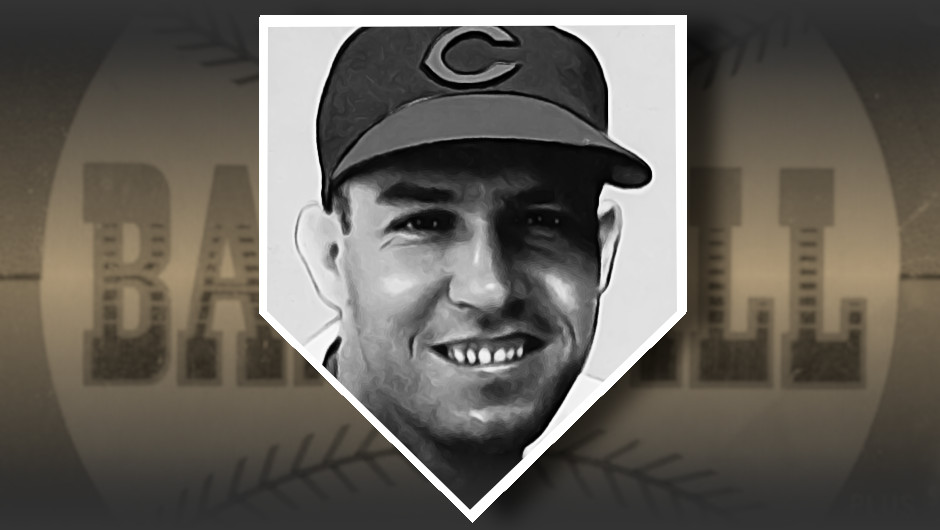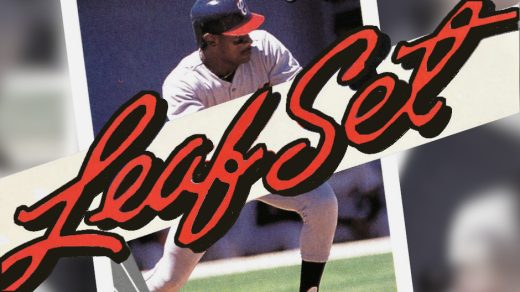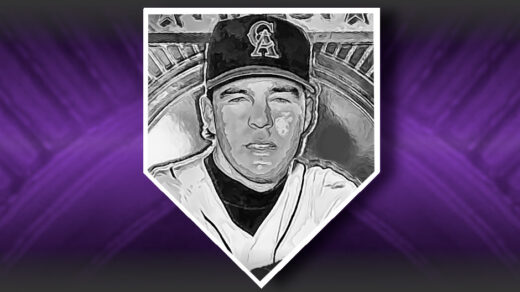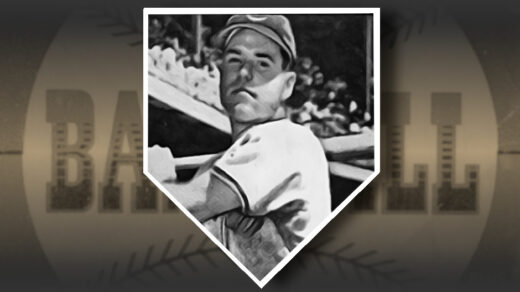Pete Reiser took 1940s baseball by storm and had changed the sport by the end of the decade. His sophomore season saw him challenge for the National League MVP with a .343 batting average, aided by preternatural speed. Reiser is said to have been able to run to first base inside 3.2 seconds, much faster than today’s average of ~4.5 seconds and ahead of the 3.9 seconds needed to be counted among the best in the game. Mickey Mantle is said to have topped out with a 3.1 second dash from the left side of the plate, with Deion Sanders and Billy Hamilton both reaching in 3.3 seconds. Reiser used this speed often, legging out hits and stealing home as many as 7 times in a season.
This speed coupled with a need to always play the game with 110% effort led to a string metric ton of injuries. He was carried off the field by stretcher at least a dozen times in his brief career, four times more than the holder of second place (Nolan Ryan over 27 seasons). Reiser didn’t leave the field under his own power 1 out of every 79 games in which he appeared. His shoulder was injured in World War 2 and he played the entire 1946 season with it separated rather than take time out for surgery. A pitch to the head gave him a concussion in 1941, to which he would add another 7 through collisions with outfield walls. These head injuries went beyond just being knocked senseless. He fractured his skull in collisions on five occasions and was temporarily paralyzed in one incident. His scariest moment came when last rites were administered after he hit the wall while chasing down a fly ball (yes, he caught it).
At this point it was becoming apparent that Reiser was fast approaching a day when he wouldn’t wake up from an up-close inspection of the outfield wall. The concrete walls of Ebbets Field were covered with padding to absorb his impact. Major League Baseball followed up with its own rule in 1949, mandating all stadiums install warning tracks to provide fielders with advance notice of approaching walls.
There is a really good documentary about Reiser posted to YouTube.
1952 Topps #189 Pete Reiser

This would be Reiser’s final baseball card. The biographical text on the back leads off with a mention of his frequent injuries. He is pictured with the Cleveland Indians, a team for which he would only appear in a few dozen games before seeing his career close out in July. The Topps’ artists added a fairly unconvincing Cleveland cap to Reiser’s picture.
Bernard Malamud’s classic baseball novel The Natural includes a character partially modeled after Reiser’s exploits. Bump Bailey is an outfielder who realizes his place in the lineup is threatened by the emergence of Roy Hobbs. Fearing for his job, he begins to play with no regard for personal safety and is killed when he runs headfirst through an outfield fence. The card itself is counted among the 1952 set’s commons, but Reiser’s story and its “what-if” nature make it more than a common to me.
